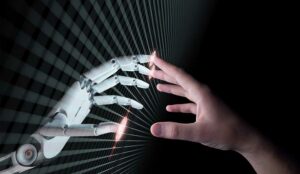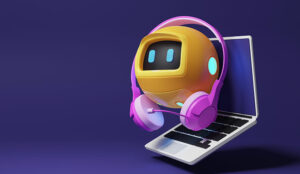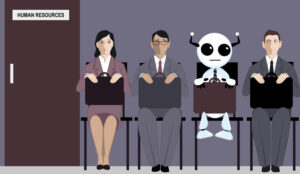Imagine a world where artificial intelligence (AI) and human expertise seamlessly intertwine, transforming the contact centre landscape as we know it?
Kevin McGachy at Sabio explains that as we embark on a journey towards 2030, the once futuristic notion of AI-powered contact centres is no longer a distant dream but a rapidly unfolding reality.
Sabio Group have witnessed first-hand the evolution of AI and its transformative impact on customer service.
From the early days of speech analytics and intent-based AI, to the rise of conversational AI that redefined the way businesses engage with customers, we have been at the forefront of AI’s evolution in the contact centre.
However, this landscape is not a static one; it is relentless and ever-changing and continuously challenges us to adapt and innovate.
Just as we began to grasp the full potential of conversational AI, the emergence of generative AI has once again shifted the goalposts; presenting new opportunities but naturally bringing with it further complexities.
In this new world, the traditional roles of agents and AI are not merely evolving; they are undergoing a profound metamorphosis that will redefine the very essence of customer service.
What Today Is, Tomorrow Is Not
Today, agents stand as the pillars of customer support, with AI serving as a powerful ally in enhancing their capabilities. However, in the coming years, we will witness a remarkable inversion of roles.
AI will emerge as the primary touchpoint for customers, taking centre stage in handling inquiries, resolving issues, and delivering personalised experiences.
Behind the scenes, however, a new breed of highly skilled human agents will act as the guiding force, overseeing and fine-tuning the AI’s performance to ensure unparalleled customer satisfaction.
This shift will demand a cultural revolution within the contact centre industry, with the agents of 2030 becoming a far cry from their present-day counterparts.
They will be the elite, armed with university qualifications and a deep understanding of AI’s intricacies. These “super agents” will possess a rare blend of technical expertise, emotional intelligence, and problem-solving prowess, enabling them to tackle the most complex customer challenges with finesse.
A Helping Hand
Sabio set up their AI practice more than 20 years ago and are – arguably – regarded as a true visionary in the space that has already begun paving the way for the contact centres of the future.
With groundbreaking projects for clients like loveholidays and HomeServe, we’ve already demonstrated the transformative potential of AI in action.
For loveholidays, our support in helping them implement Twilio Flex, an AI-infused contact centre platform, resulted in a remarkable 20% boost in agent productivity.
By harnessing the power of AI automation, agents were liberated from mundane tasks, allowing them to focus on delivering exceptional, personalised customer experiences.
Similarly, HomeServe unveiled the true potential of AI and automation in transforming customer journeys. Through intelligent self-service options and smart routing using Google’s CCAI tech, HomeServe UK witnessed a significant reduction in call volumes while simultaneously elevating customer satisfaction to new heights.
The speech analytics project also identified those calls that were made as the result of customers being unable to complete digital journeys – thus helping the HomeServe digital team to focus on specific areas that were proving too complex for customers. This helped to unlock £1m plus annual return on its Speech Analytics investment.
As we stand on the edge of a new contact centre tech landscape driven by Generative AI, businesses must embrace this revolution or risk being left behind.
However, navigating the complexities of AI integration requires a steady hand and a visionary partner. This is where – in my opinion – expertise shines bright, and has proven itself over the years.
What Will Your AI Strategy Look Like?
By collaborating with experts, organisations can chart a course towards a future where AI and human talent work hand in hand, creating a customer service experience that breaks the boundaries of what was once thought possible.
The contact centres of 2030 will be a symphony of AI and human brilliance, delivering unparalleled efficiency, personalisation, and empathy. As customer expectations continue to soar, businesses that harness AI’s power will not only survive but thrive in this new era.
But, to realise this potential, the time to act is now.
Embark on a journey towards the contact centre of tomorrow.
The question is, will you be a pioneer or a spectator?
This blog post has been re-published by kind permission of Sabio – View the Original Article
For more information about Sabio - visit the Sabio Website
Call Centre Helper is not responsible for the content of these guest blog posts. The opinions expressed in this article are those of the author, and do not necessarily reflect those of Call Centre Helper.
Author: Sabio
Published On: 6th May 2024 - Last modified: 6th Dec 2024
Read more about - Guest Blogs, Kevin McGachy, Sabio






 Sabio Group is a global digital customer experience (CX) transformation specialist with major operations in the UK (England and Scotland), Spain, France, Netherlands, Malaysia, Singapore, South Africa and India. Through its own technology, and that of world-class technology leaders such as Amazon Connect, Avaya, Genesys, Google Cloud, Salesforce, Twilio and Verint, Sabio helps organisations optimise their customer journeys by making better decisions across their multiple contact channels.
Sabio Group is a global digital customer experience (CX) transformation specialist with major operations in the UK (England and Scotland), Spain, France, Netherlands, Malaysia, Singapore, South Africa and India. Through its own technology, and that of world-class technology leaders such as Amazon Connect, Avaya, Genesys, Google Cloud, Salesforce, Twilio and Verint, Sabio helps organisations optimise their customer journeys by making better decisions across their multiple contact channels. 












